Feeding Disorder or Difficulty
What is Feeding Disorder or Difficulty?
Adequate nutrition and hydration are important to maintain health. Feeding and swallowing problems are common in infants and young children. These can include picky eaters, children with sensory aversions or limited food preferences, and children with swallowing problems (dysphagia).
There are many causes for swallowing disorders. Children with structural (cleft lip or palate), neurological, or developmental problems are at risk for problems, particularly if the child has breathing (respiratory) issues.
Swallowing problems can occur as the child tries to move the liquid or food through the three stages of swallowing: moving it from the mouth to the throat (pharynx), through the throat to the feeding tube (esophagus), and then through the esophagus to the stomach.
Problems at any of these stages may make eating difficult, unpleasant or unsafe for an infant or child. Food or liquids can go into the nose or into the lungs (aspiration). The vocal folds and other structures prevent food or liquid from entering the airway, but if they do not close off the airway adequately, liquid or food may travel into the lungs during or after swallowing. This can cause serious infection and lung damage. Aspiration cannot always be observed. Sometimes food slips into the lungs with no visible signs (silent aspiration) and can only observed in videofluoroscopy.
These warning signs will alert you to problems with swallowing (dysphagia): coughing during or after eating or drinking; wet or gurgly sounding voice while the child is eating or drinking or soon after; chest congestion after eating; extra effort or time needed to chew or swallow; food or liquid leaking from the mouth; food appears to get stuck in the mouth; meal times taking an excessive amount of time; the child has recurrent pneumonia; weight loss or dehydration from not being able to eat enough.
What can professionals do to help?
A speech-language pathologist (SLP) who has knowledge or specializes in swallowing disorders can evaluate infants or children who are experiencing problems eating and drinking. The SLP will take a history of medical conditions and symptoms, observe the child eat, and make recommendations to make food intake safe and effective and mealtimes more pleasant for the child and family.
There are tests that can confirm if a child has difficulty swallowing. The primary evaluation is a modified barium swallow where the child eats or drinks food or liquid mixed with barium to view the swallowing process on videofluoroscopy. Sometimes, endoscopic assessment is used by inserting a lighted scope through the nose so the swallow can be viewed on a screen.
Treatment suggestions are based on assessment information, so they will depend on the cause, symptoms, and type of swallowing problem. The assessment will determine whether it is safe for a child to eat and what textures the child is best able to handle. The speech-language pathologist will work with parents and other caregivers to help the child eat orally and safely and make recommendations on textures and utensils.
Medical interventions include supplemental feeding to replace or supplement oral feeds. A tube may be inserted through the nose into the stomach (nasogastric or NG tube) for short-term usage. If the problems are likely to be longer term, a feeding tube may be inserted into the stomach (gastrostomy or G-tube) or into the small intestine (jejunostomy or J-tube). The role of the SLP will depend on the medical recommendation for oral feeds. If a child is fed by tube and has a safe swallow, the SLP will work with the family to transition towards oral feeds. If the risk of aspiration makes oral feeding unsafe, the SLP will provide support and recommendations to ensure that the child and family have positive experiences during mealtimes.
The SLP will educate the parents on the importance of oral hygiene since children who have swallowing problems are likely to be aspirating their own secretions. Dental care is important to reduce entry of bacteria into the lungs.
